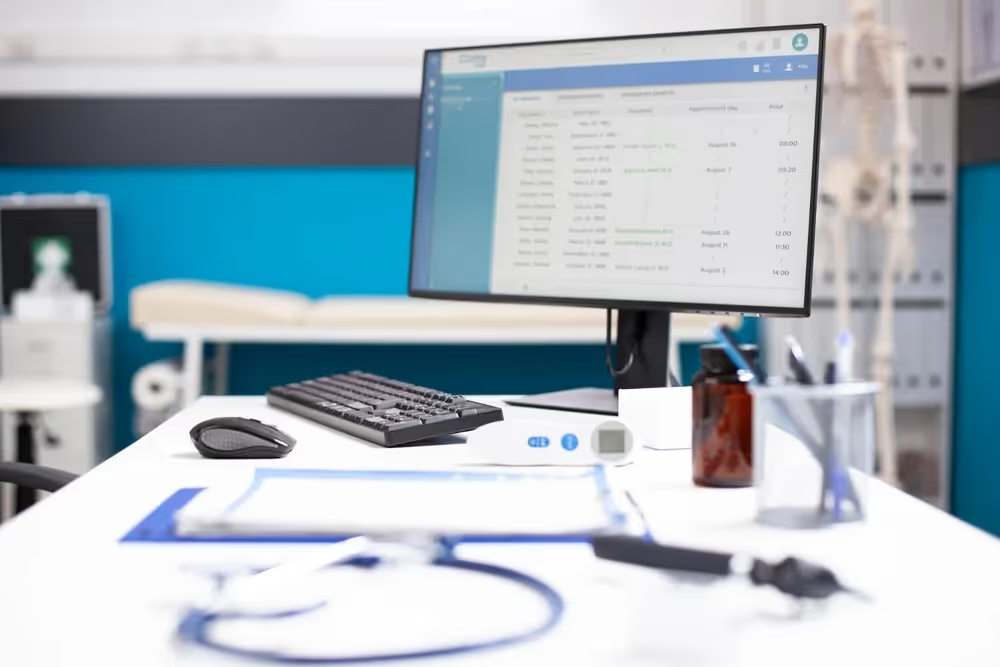Understanding the Claim Scrubbing Process in Medical Billing: How to Reduce Denials and Maximize Reimbursement
In today’s blog we’ll explore what claim scrubbing is, why it's essential, the role of automation and the most common errors these tools help catch.

Did you know that 77% of healthcare leaders reported an increase in claim denials in 2024? That is a stark difference from when asked in 2022 where respondents said 42% said denials are increasing. As payer requirements grow more complex, it’s no surprise that clean claim rates are getting affected. The financial impact of denials is significant, denials delays reimbursement and increases administrative workload.
That is why healthcare organizations are turning to claim scrubbing software as a first line of defense. Claim Scrubbing is an automated or manual review of medical claims before submission. Searching for errors like missing codes,formatting issues, or incorrect patient information that can lead to rejections or expensive delays.
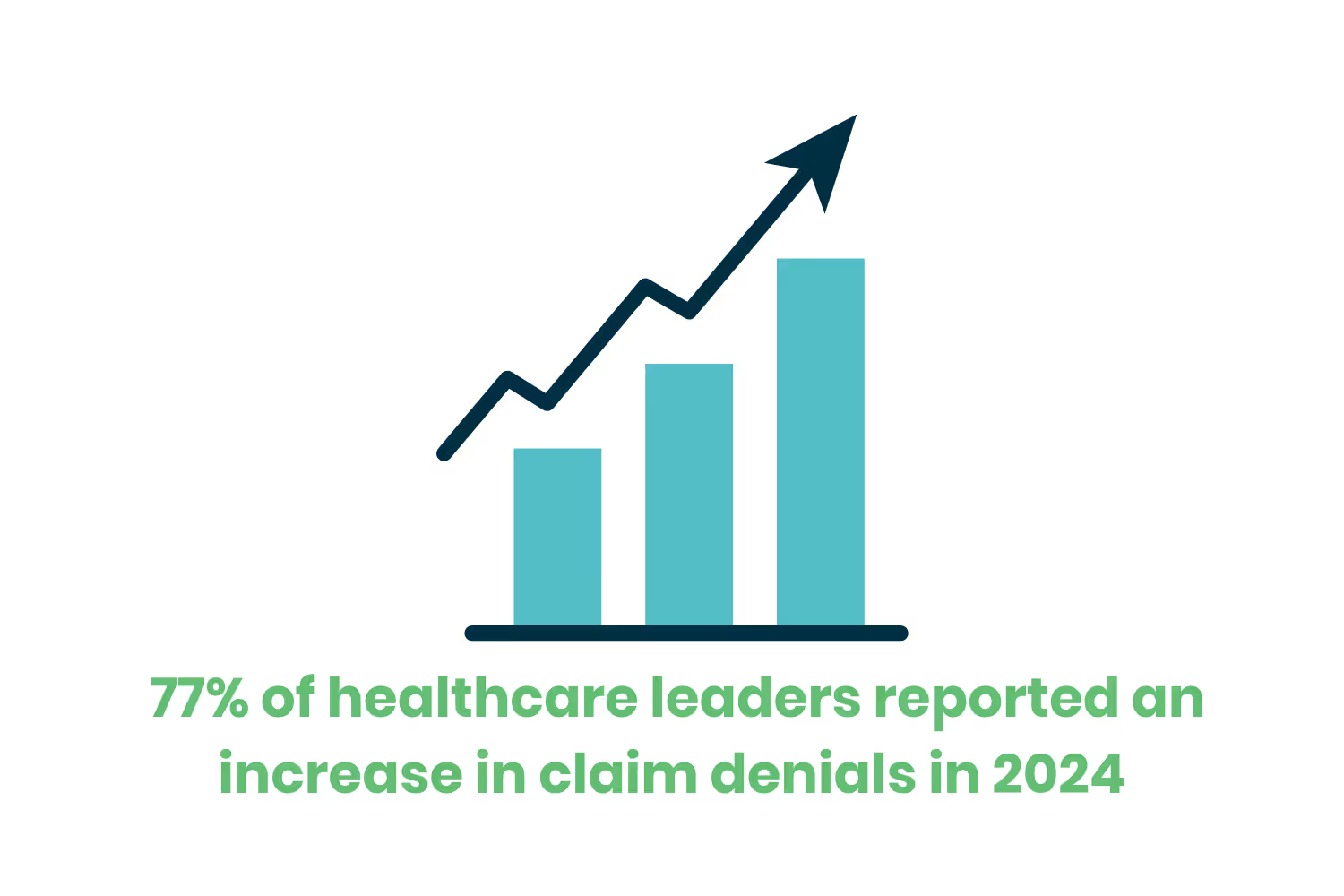
By scrubbing claims before they are submitted to the insurers, providers can prevent denials altogether. Overall saving time, reducing corrections, and leads to faster payments. All while improving the efficiency of the revenue cycle. As automation becomes more and more popular in the healthcare industry, claim scrubbers can now find a wider range of issues with a high accuracy rate.
In today’s blog we’ll explore what claim scrubbing is, why it's essential, the role of automation and the most common errors these tools help catch.
Let’s dive into it!
What is Claim Scrubbing in Medical Billing?
Before we start diving into what claim scrubbing is, let’s first define what a claim is. In healthcare, a claim is a formal request submitted to an insurance company for reimbursement. It serves as a bill that details the treatment provided and any related information, helping to ensure the services are covered by the patient’s insurance.
Now that you know what a claim is, let's go over what claim scrubbing is. Claim scrubbing is the process of reviewing or “scrubbing” a claim to search for errors. If any issues are found, the claim is sent back to the billing department for them to correct it. If the claim is clean, it is sent directly to the insurance company for reimbursement.
Claim scrubbing occurs in the healthcare revenue cycle after coding but before the submission of the claim. Your organization can ensure claims are scrubbed effectively by using a combination of the billing team, clearinghouse or automated tools to catch and fix common errors.

Why is Accurate Claim Scrubbing Essential?
In the healthcare revenue cycle, accuracy is vital. Claim scrubbing plays a critical role in ensuring claims are correct the first time they’re submitted. You might be asking, “why is that so critical in the revenue cycle?” and there are a few key reasons why.
When a claim contains an error, it gets sent back to the billing department for correction. This not only causes a delay in payments but also increases administrative costs. Improving the First-Pass Resolution Rate through accurate claim scrubbing helps the healthcare revenue cycle run more efficiently. First-Pass Resolution Rate measures the percentage of medical claims that are accepted and paid on the first submission without any edits.
Ultimately, effective claim scrubbing boosts overall claim accuracy, strengthens cash flow, and enhances patient satisfaction.
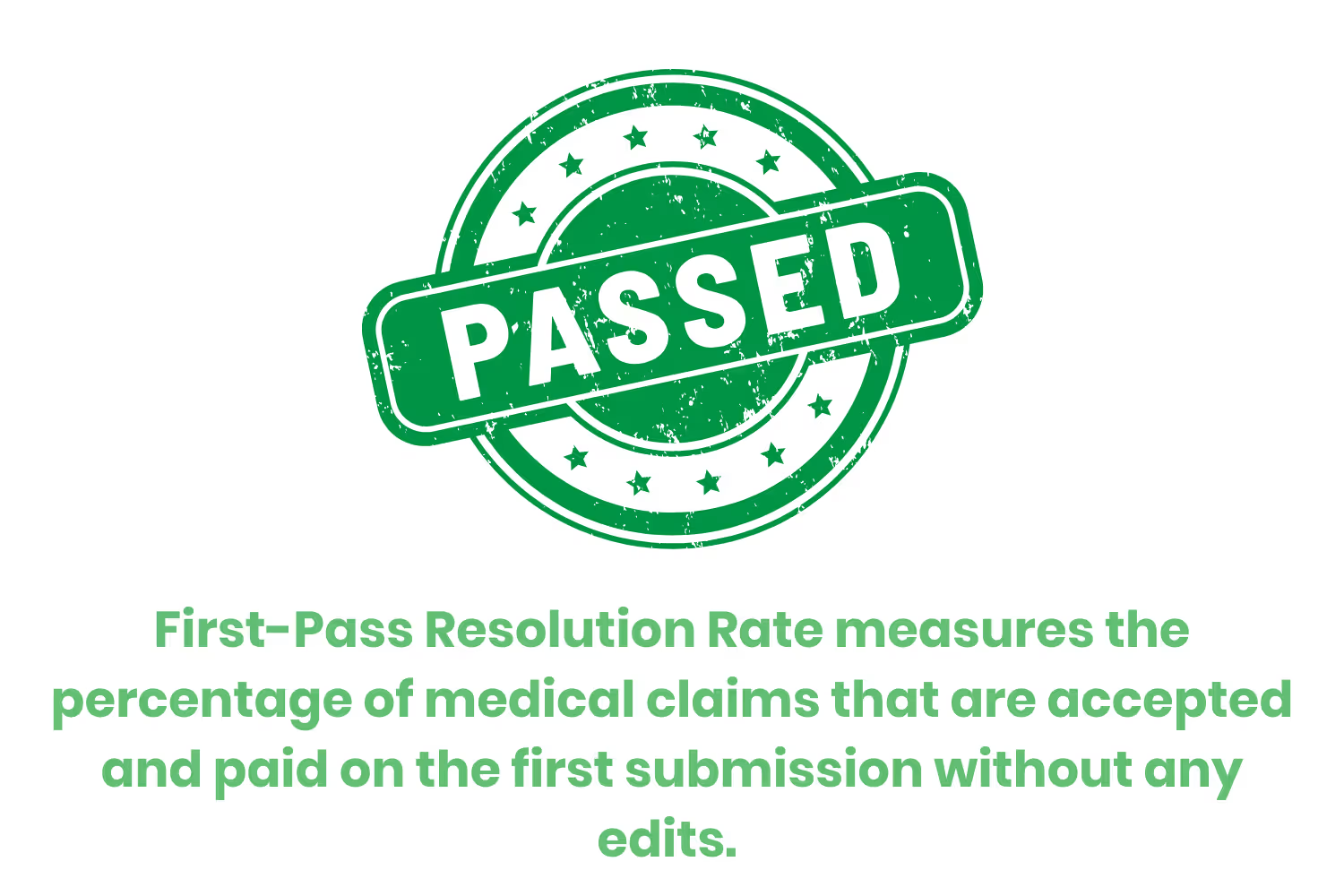
The Role of Automation in Enhancing the Claim Scrubbing Process
There are multiple approaches to the claim scrubbing process, and one of the most effective is automation. Automated claim scrubbing helps reduce human errors that may have occurred during manual review.
Automated Billing and Coding Software
Automated billing and coding software is technology that translates medical procedures into standardized codes and then submits the claims to the payer. Automated software helps reduce errors by analyzing documentation, and ensuring the correct codes are being applied. It helps by automatically assigning codes based on the documentation or the EHR entries.
The use of new automation of RCM automation technologies, helps streamline the process reducing human error. The automation also helps free up agents to focus on more value added tasks.
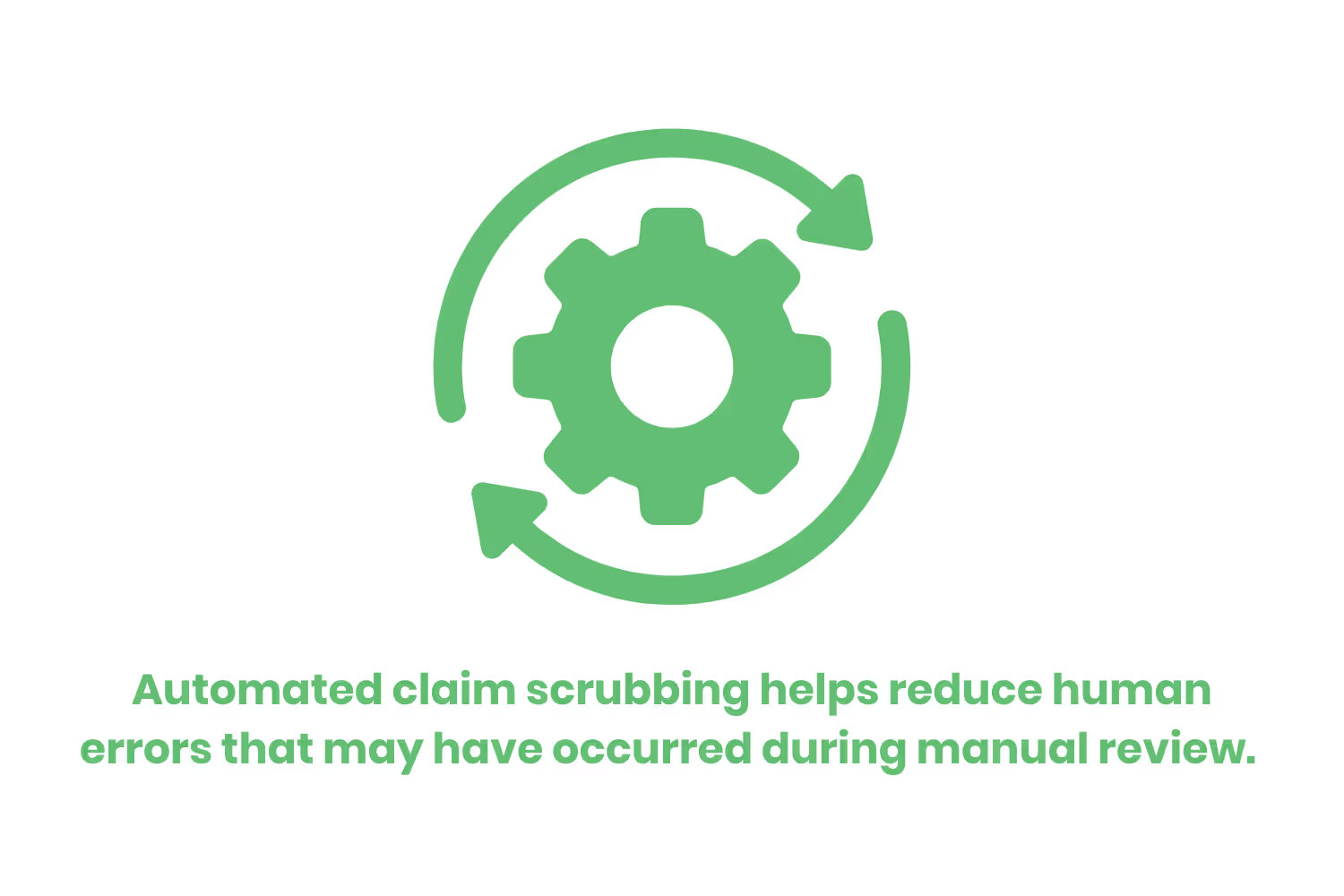
AI In Revenue Cycle Management
The use of Artificial Intelligence or (AI) is becoming more and more popular especially in the healthcare industry. If it is used properly it can significantly help streamline your revenue cycle.
The use of AI-powered tools is helping change the RCM by identifying potential claim issues before they even pop up. AI tools do this by analyzing old data, and looking for patterns in previously denied claims. With these patterns AI uses predictive analytics to help forecast future trends and help reduce the risk of future denials.
What are Common Errors Identified During Claim Scrubbing?
There are a few common errors that claim scrubbing tools are designed to catch, to help streamline the process.
Patient Data Errors:
Patient errors are very common especially if the data is inputted manually, as a slip of a finger could cause a denial. This could be a range of the patient's name, birthday, insurance information or even address. Any of these small errors can trigger a denial code to be returned to the insurance provider. It is vital that your organization is ensuring patient data is accurate and up to date to help prevent these errors from delaying payments.
Coding Issues:
The way claims get coded can present a number of challenges, but it’s an area that your team has more control over compared to other parts of the revenue cycle.
When coding your staff needs to be very cautious when coding to ensure the correct codes are being used. There are a large number of codes that your team can use but only one is the correct usage. Coding errors can lead to delayed or denied claims, slowing your reimbursement. Sloppy documentation by physicians or other healthcare providers could also be a factor in a code error.
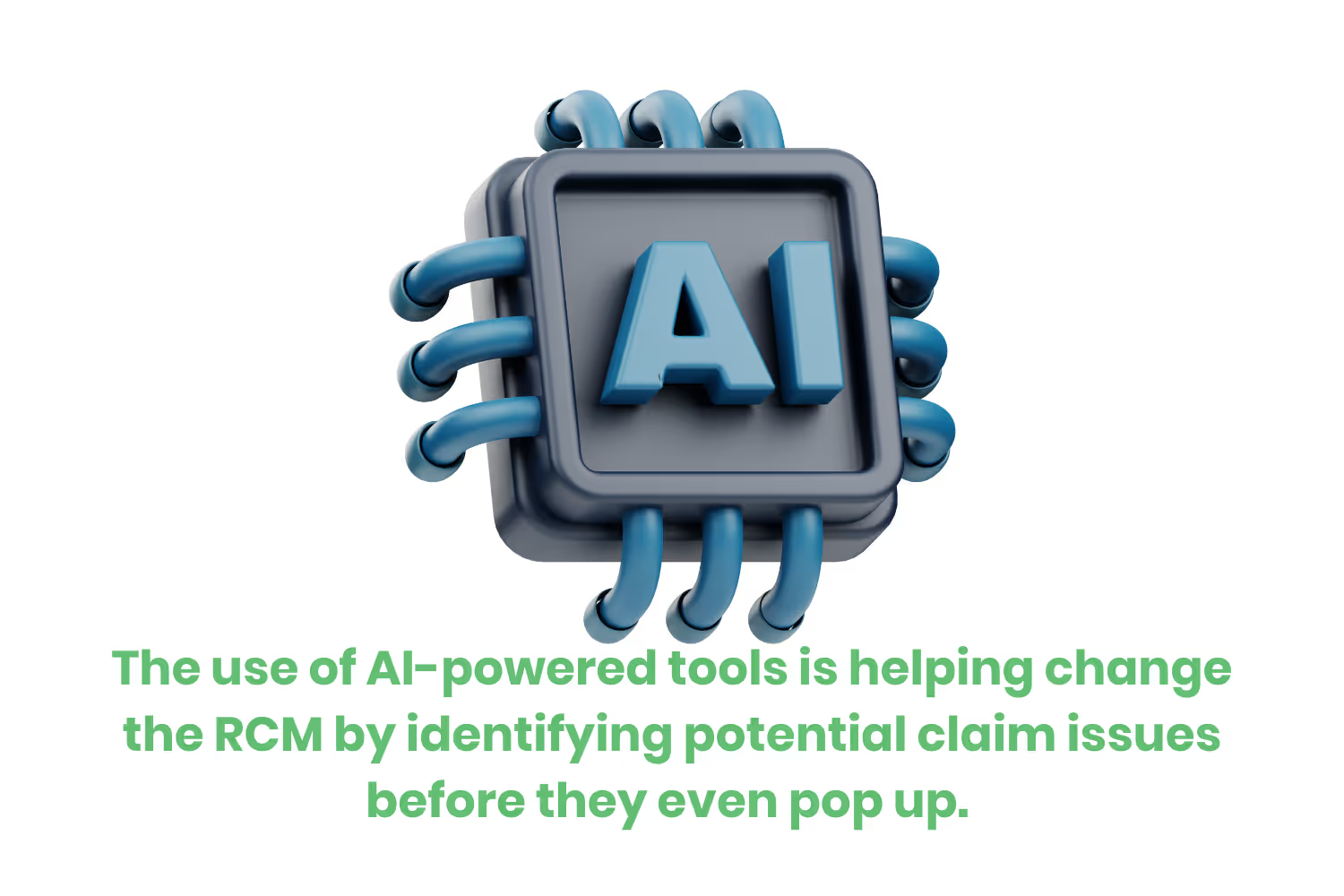
Authorization Issues:
Some services require prior authorization before the service can be rendered. In return claims that are submitted without the required prior authorizations or approvals can be rejected by the payer. Manual claim scrubbing reviews to ensure that all the necessary authorizations are present and valid to avoid this potential delay.
Payer Specific Formatting Errors:
Each insurance provider has a unique formatting or submission requirements for claims. Utilizing claim scrubbing software helps ensure that claims comply with these payer-specific rules. Helping reduce the chance of rejection due to any potential technical errors.
Conclusion
In today’s challenging reimbursement landscape, preventing denials before they happen is one of the most vital things that your healthcare organization can do. Claim scrubbing plays a vital role in this, catching errors early and reducing administrative burden, allowing for faster payments.
As payer requirements continue to evolve more and more complex, automation and accurate claim reviews are more important than ever. Investing in claim scrubbing tools are not a choice, it is essential to protecting your revenue and strengthening your entire revenue cycle process.
Whether you are looking to reduce overall denials or just to improve your cash flow, claim scrubbing services are a crucial step to achieving your goals.
Emphasize your product's unique features or benefits to differentiate it from competitors
In nec dictum adipiscing pharetra enim etiam scelerisque dolor purus ipsum egestas cursus vulputate arcu egestas ut eu sed mollis consectetur mattis pharetra curabitur et maecenas in mattis fames consectetur ipsum quis risus mauris aliquam ornare nisl purus at ipsum nulla accumsan consectetur vestibulum suspendisse aliquam condimentum scelerisque lacinia pellentesque vestibulum condimentum turpis ligula pharetra dictum sapien facilisis sapien at sagittis et cursus congue.
- Pharetra curabitur et maecenas in mattis fames consectetur ipsum quis risus.
- Justo urna nisi auctor consequat consectetur dolor lectus blandit.
- Eget egestas volutpat lacinia vestibulum vitae mattis hendrerit.
- Ornare elit odio tellus orci bibendum dictum id sem congue enim amet diam.
Incorporate statistics or specific numbers to highlight the effectiveness or popularity of your offering
Convallis pellentesque ullamcorper sapien sed tristique fermentum proin amet quam tincidunt feugiat vitae neque quisque odio ut pellentesque ac mauris eget lectus. Pretium arcu turpis lacus sapien sit at eu sapien duis magna nunc nibh nam non ut nibh ultrices ultrices elementum egestas enim nisl sed cursus pellentesque sit dignissim enim euismod sit et convallis sed pelis viverra quam at nisl sit pharetra enim nisl nec vestibulum posuere in volutpat sed blandit neque risus.

Use time-sensitive language to encourage immediate action, such as "Limited Time Offer
Feugiat vitae neque quisque odio ut pellentesque ac mauris eget lectus. Pretium arcu turpis lacus sapien sit at eu sapien duis magna nunc nibh nam non ut nibh ultrices ultrices elementum egestas enim nisl sed cursus pellentesque sit dignissim enim euismod sit et convallis sed pelis viverra quam at nisl sit pharetra enim nisl nec vestibulum posuere in volutpat sed blandit neque risus.
- Pharetra curabitur et maecenas in mattis fames consectetur ipsum quis risus.
- Justo urna nisi auctor consequat consectetur dolor lectus blandit.
- Eget egestas volutpat lacinia vestibulum vitae mattis hendrerit.
- Ornare elit odio tellus orci bibendum dictum id sem congue enim amet diam.
Address customer pain points directly by showing how your product solves their problems
Feugiat vitae neque quisque odio ut pellentesque ac mauris eget lectus. Pretium arcu turpis lacus sapien sit at eu sapien duis magna nunc nibh nam non ut nibh ultrices ultrices elementum egestas enim nisl sed cursus pellentesque sit dignissim enim euismod sit et convallis sed pelis viverra quam at nisl sit pharetra enim nisl nec vestibulum posuere in volutpat sed blandit neque risus.
Vel etiam vel amet aenean eget in habitasse nunc duis tellus sem turpis risus aliquam ac volutpat tellus eu faucibus ullamcorper.
Tailor titles to your ideal customer segment using phrases like "Designed for Busy Professionals
Sed pretium id nibh id sit felis vitae volutpat volutpat adipiscing at sodales neque lectus mi phasellus commodo at elit suspendisse ornare faucibus lectus purus viverra in nec aliquet commodo et sed sed nisi tempor mi pellentesque arcu viverra pretium duis enim vulputate dignissim etiam ultrices vitae neque urna proin nibh diam turpis augue lacus.




